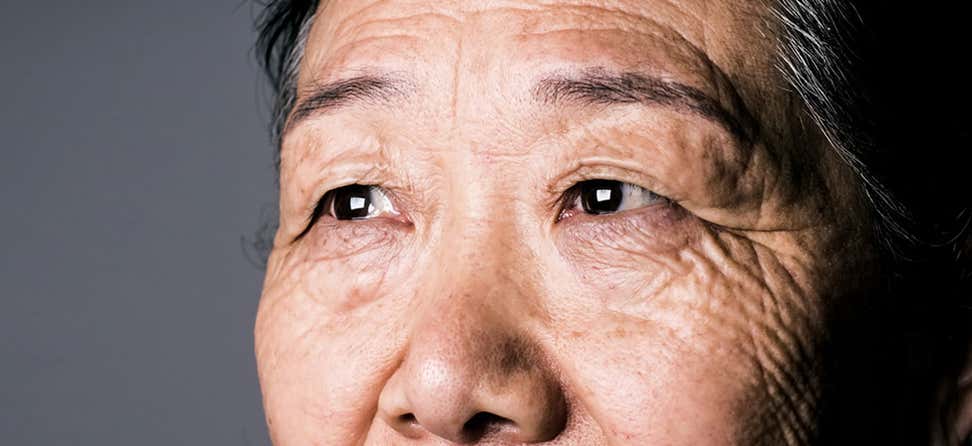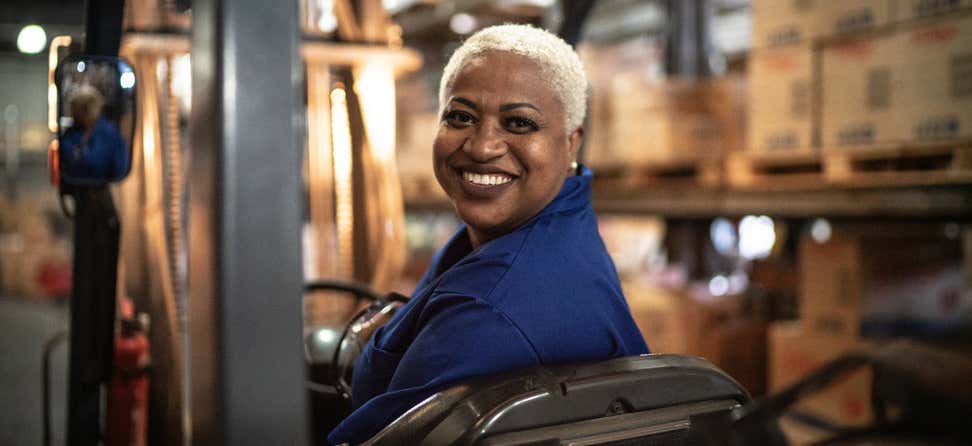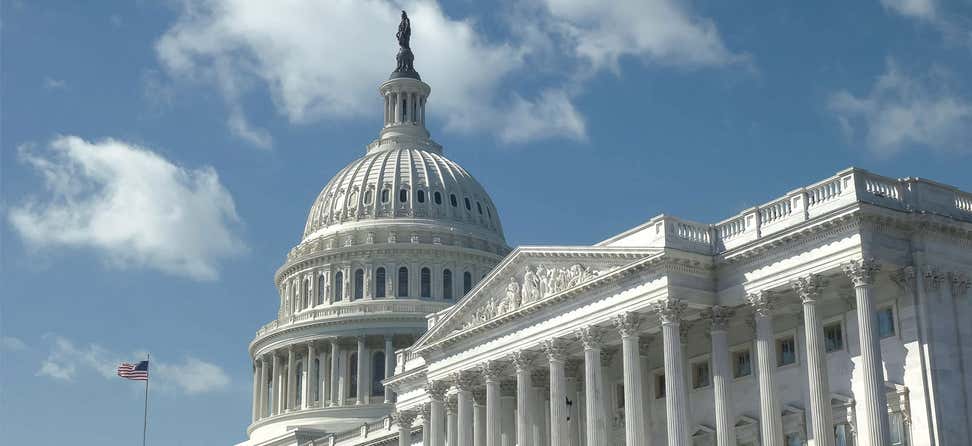Key Takeaways
Elder abuse is a silent problem that robs seniors of their dignity, security, and—in some cases—costs them their lives.
Up to five million older Americans are abused every year, and the annual loss by victims of financial abuse is estimated to be at least $36.5 billion.
NCOA is working to advance legislation that funds the Elder Justice Act and elder abuse protections of the Older Americans Act.
What is elder abuse?
Elder abuse includes physical abuse, emotional abuse, sexual abuse, exploitation, neglect, and abandonment. Perpetrators include children, other family members, and spouses—as well as staff at nursing homes, assisted living, and other facilities.
- Physical abuse means inflicting physical pain or injury upon an older adult.
- Sexual abuse means touching, fondling, intercourse, or any other sexual activity with an older adult, when the older adult is unable to understand, unwilling to consent, threatened, or physically forced.
- Emotional abuse means verbal assaults, threats of abuse, harassment, or intimidation.
- Confinement means restraining or isolating an older adult, other than for medical reasons.
- Passive neglect is a caregiver’s failure to provide an older adult with life’s necessities, including, but not limited to, food, clothing, shelter, or medical care.
- Willful deprivation means denying an older adult medication, medical care, shelter, food, a therapeutic device, or other physical assistance, and exposing that person to the risk of physical, mental, or emotional harm—except when the older, competent adult has expressed a desire to go without such care.
- Financial exploitation means the misuse or withholding of an older adult’s resources by another.
Learn more about the types of abuse from the National Center on Elder Abuse (NCEA).
How many older Americans are abused?
Approximately one in 10 Americans aged 60+ have experienced some form of elder abuse. Some estimates range as high as five million elders who are abused each year. One study estimated that only one in 24 cases of abuse are reported to authorities.
Who are the abusers of older adults?
Abusers are both women and men. In almost 60% of elder abuse and neglect incidents, the perpetrator is a family member. Two thirds of perpetrators are adult children or spouses.
What makes an older adult vulnerable to abuse?
Social isolation and mental impairment (such as dementia or Alzheimer’s disease ) are two factors. Recent studies show that nearly half of those with dementia experienced abuse or neglect. Interpersonal violence also occurs at disproportionately higher rates among adults with disabilities.
What are the warning signs of elder abuse?
- Physical abuse, neglect, or mistreatment: Bruises, pressure marks, broken bones, abrasions, burns
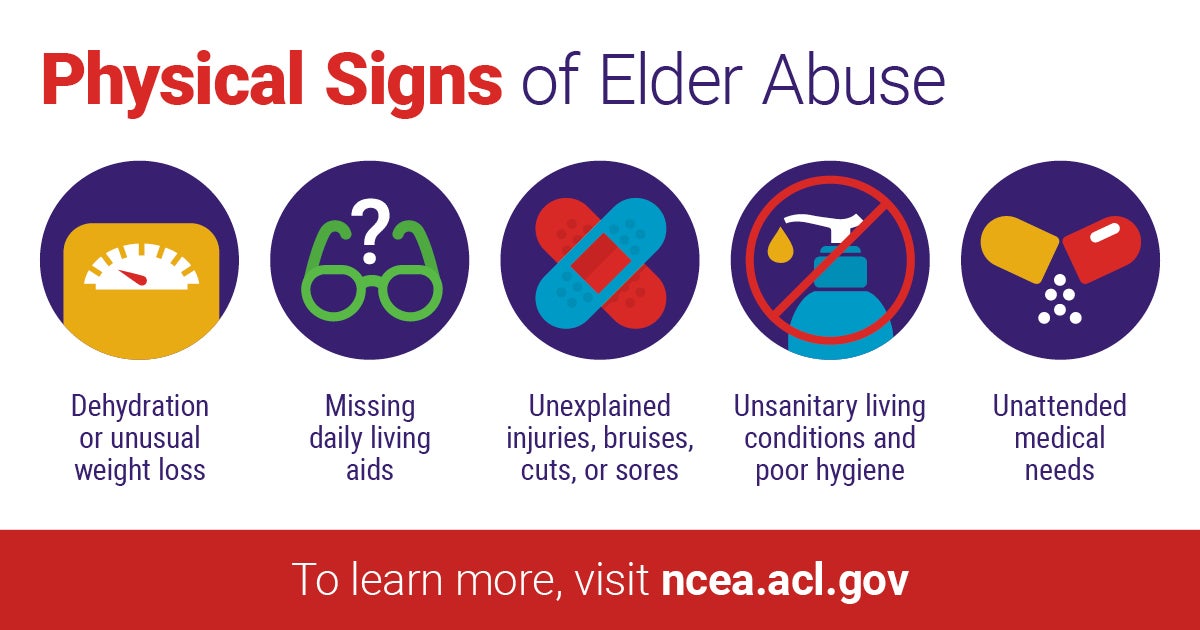
- Emotional abuse: Unexplained withdrawal from normal activities, a sudden change in alertness, or unusual depression; strained or tense relationships; frequent arguments between the caregiver and older adult
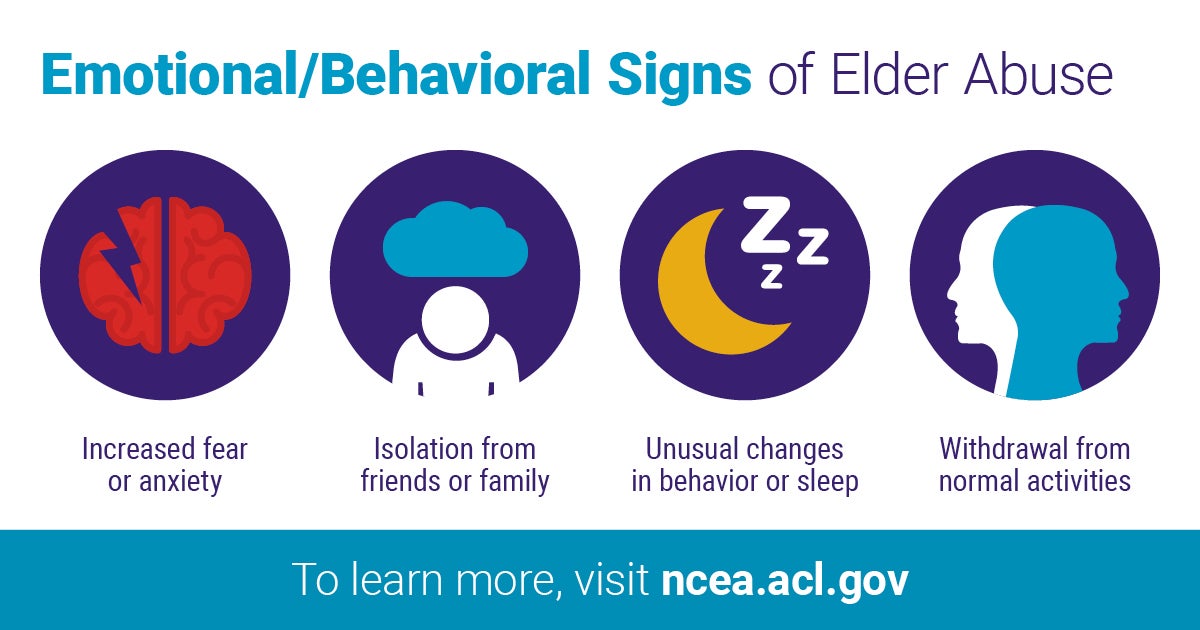
- Financial abuse: Sudden changes in financial situations
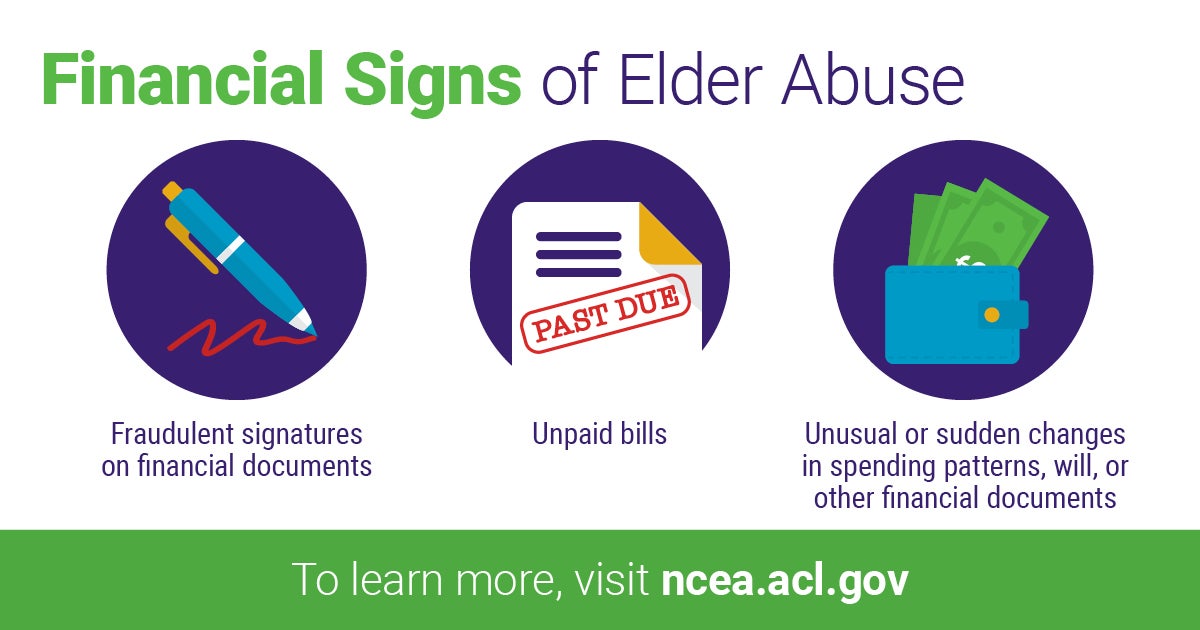
- Neglect: Bedsores, unattended medical needs, poor hygiene, unusual weight loss
- Verbal or emotional abuse: Belittling, threats, or other uses of power and control by individuals
What are the effects of elder abuse?
Elders who have been abused have a 300% higher risk of death when compared to those who have not been mistreated. While likely under-reported, estimates of elder financial abuse and fraud costs to older Americans range from $2.6 billion to $36.5 billion annually. Yet, financial exploitation is self-reported at rates higher than emotional, physical, and sexual abuse or neglect.
Are there criminal penalties for the abusers?
Most states have penalties for those who victimize older adults. Increasingly, across the country, law enforcement officers and prosecutors are trained on elder abuse and ways to use criminal and civil laws to bring abusers to justice. Review state-specific elder justice laws on the Elder Abuse Guide for Law Enforcement (EAGLE) website.
How does a person make an elder abuse report?
If an older adult is in immediate, life-threatening danger, call 911. Anyone who suspects that an older adult is being mistreated should contact a local Adult Protective Services office, Long-Term Care Ombudsman, or police. NCEA describes various scenarios and ways to Get Help, and more information is available from the Eldercare Locator online or by calling 1-800-677-1116.
How can elder abuse be prevented?
Educating seniors, professionals, caregivers, and the public on abuse is critical to prevention. If you’re an older adult, you can stay safe by:
- Taking care of your health.
- Seeking professional help for drug, alcohol, and depression concerns and urging family members to get help for these problems.
- Attending support groups for spouses and learning about domestic violence services.
- Planning for your own future. With a power of attorney or a living will, you can address health care decisions now to avoid confusion and family problems later. Seek independent advice from someone you trust before signing any documents.
- Staying active in the community and connected with friends and family. This will decrease social isolation, which has been connected to elder abuse.
- Posting and opening your own mail.
- Not giving personal information over the phone.
- Using direct deposit for all checks.
- Having your own phone.
- Reviewing your will periodically.
- Knowing your rights. If you engage the services of a paid or family caregiver, you have the right to voice your preferences and concerns. If you live in a nursing home, call your Long Term Care Ombudsman. The ombudsman is your advocate and has the power to intervene.
Where can I learn more?
- Administration for Community Living (ACL): Protecting Rights and Preventing Abuse
- National Center on Law & Elder Rights
- USC Center on Elder Mistreatment
- CFPB Office of Financial Protection for Older Americans
- Department of Justice Elder Justice Initiative
- Federal Trade Commission Scam Alerts
- U.S. Government Accountability Office (GAO)
- Elder Justice Coalition
- Ageless Alliance
- Women’s Institute for a Secure Retirement (WISER)
- Elder Financial Protection Network
- National Adult Protective Services Association
- National Long-Term Care Ombudsman Resource Center
- NCEA and United Nations resources


